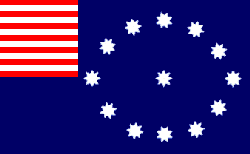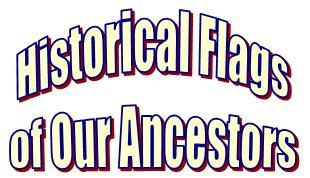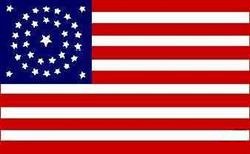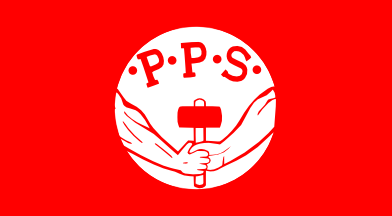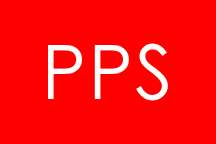Note: If an image ever fails to appear - refresh your page, it really is there
The Flags of the Poles and Poland - Part 3
1926 to 1999
| Top of Page | Medieval Poland 900 to 1599 | 17th and 18th Century Poland 1600 to 1795 |
| Alliance of the Three Black Eagles (Poland Partitioned) 1795 to 1807 | Napoleonic Era and Poland 1807-1824 |
| The Congress of Vienna and its Aftermath 1820-1914 | World War I and the Parliamentary Democracy 1914 to 1926 |
| Second Republic of Poland (Sanacja) 1926 to 1939 | World War II (German and Soviet occupation) 1939 to 1945 |
| People's Polish Republic (Communist regime) 1945 to 1999 | Third Republic of Poland 1999 to present |
The Flags of Second Republic of Poland (The Sanacja) 1926-1939
The period of the Second Republic existence was clearly divided into two parts: 1919 to 1926 was the time of the "Parliamentary Democracy" where the multi-party democratic system of the supremacy of the legislative power over the presidency (executive power) was prevalent. That system was codified in the very democratic constitution of 1921. But, taking under consideration the multitude of political parties represented in the Parliament (Sejm) and contemporary economic difficulties (the Great Depression) it was a hindrance to the stability of the country, and the system of government wasn't working well for Poland at this period of time.

Second Polish Republic 1927
|
The Sanation (Sanacja) 1926-1939
The stability of the country and the system of government under the Parliamentary Democracy (1919-1926) wasn't working well for conservatives like Marshal Pilsudski which prompted him to overthrow the Parliamentary Democracy in the Coup of May 1926 to remedy the shortcomings of what he called the "democratic mess" and to introduce the "Sanacja" (1926-39) system of limited democracy, guided by the increased power of the executive branch. It was codified in the Constitution of 1935.
With the Sanacja period came a completely different rendition of the Polish White Eagle,
designed by Zygmunt Kaminiski in 1927, on the flag and coat-of-arms that sets off the periods of the two different
regimes in the very illustrative way. |
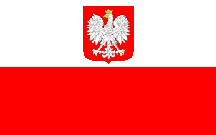
Second Polish Republic 1927
|
State Flag of the Second Polish Republic 1927-1939
With the Sanacja period came a completely different rendition of the Polish White Eagle,
designed by Zygmunt Kaminiski in 1927, on the flag and coat-of-arms that sets off the periods of the two different
regimes in the very illustrative way.
This was the State Flag of the Second Republic of Poland, as constituted by Polish parliament in 1927. The crown, designed by Zygmunt Kaminiski in 1927, adoring the eagle's head is a symbol of sovereignty and not of monarchy. On land this flag was used as the diplomatic flag abroad. This flag with the coat-of-arms was also used as the state flag and a merchant flag. |
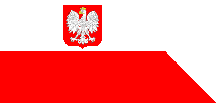
Polish War Flag 1927
|
Second Polish Republic War Flag 1920-1939
A war flag (or military flag) is a variant of a national flag for use by the nation's military forces on land. (The nautical equivalent is a naval ensign.) Under this strict sense of the term, few nations currently have war flags, most preferring to use instead their state flag or standard national flag for this purpose. |
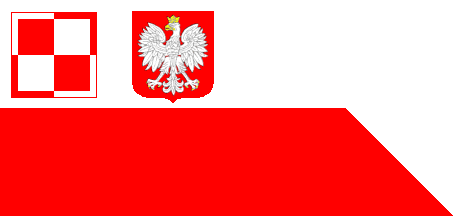
Polish Military Airport Flag
|
Second Polish Republic Flag of Military Airports 1930-1938
The practice of having special Military airport flags called "Flaga lotnisk" started during the Second Republic. They consisted of horizontal bicolors of white and red on a swallow-tailed flag, defaced with the arms of Poland in the middle of the white stripe and the Air Force checkerboard in the white stripe between the coat-of-arms and the hoist.
A similar flag, minus the swallow-tails is still used at Military airports and heliports today. |

Naval Ensign of River Fleet
|
Second Polish Republic Departmental Vessel Ensigns 1930-1939
This flag is an example of the Second Polish Republic departmental ensigns used for the flotillas of the civil river boats, such as the customs service between 1930 and 1939. |

Naval Ensign of River
Military Vessels
|
Second Polish Republic Naval Ensign for River Military Vessels
1938-1939
This flag was briefly used on military river boats by the Second Polish Republic Navy near the end of 1938 until the beginning of World War II when Poland was overrun by the Germans and the Soviets. |
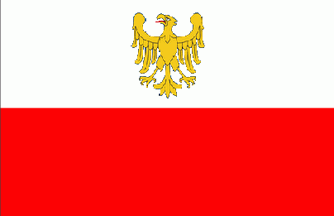
Trans-Olza Silesia Flag
|
Zaolzie (Trans-Olza Silesia) 1938-1939
With the delayed and unclear decisions of the League of Nations, the Czechs took advantage of the Polish involvement in the war in the East and sized the disputed territory by force. In 1938, when the Munich Agreement sealed the fate of Czechoslovakia, the Poles decided to act and occupied that piece of land inhabited by the majority Polish population, which felt discriminated by the Czechs. Ostensibly, it was the move to prevent the German takeover of the territory and an important railroad junction. Although the Poles of Zaolzie were euphoric to be reunited with their nation, the occupation of it was an outright mistake at that time as it appeared to be a common action with the Nazi Germany and Hungary to dismember and liquidate Czechoslovak Republic. Soon, in 1939, the area was taken by the Nazis anyway, and after the war Stalin decided it would revert to Czechoslovakia again, disregarding the ethnic composition of it.
This flag is based on the photos of the local people weaving these flags while welcoming the Polish troops entering Zaolzie, the Land Beyond the Olza River. On September 1, 2009, during the commemorations of the 70th Anniversary of the beginning of World War II, Polish president, Lech Kaczynski, publicly apologized to the Czechs for that invasion, taking them by the considerable surprise. Now, with the both nations belonging to the Schengen Zone of the European Union, the issue of the border becomes practically meaningless.
|
| Top of Page | Medieval Poland 900 to 1599 | 17th and 18th Century Poland 1600 to 1795 |
| Alliance of the Three Black Eagles (Poland Partitioned) 1795 to 1807 | Napoleonic Era and Poland 1807-1824 |
| The Congress of Vienna and its Aftermath 1820-1914 | World War I and the Parliamentary Democracy 1914 to 1926 |
| Second Republic of Poland (Sanacja) 1926 to 1939 | World War II (German and Soviet occupation) 1939 to 1945 |
| People's Polish Republic (Communist regime) 1945 to 1999 | Third Republic of Poland 1999 to present |
The Flags of World War II (German and Soviet Occupation) 1939-1945
Poland did successfully regained its independence in 1918, but the Second Polish Republic would soon be destroyed again by Nazi Germany and the Soviet Union in their 1939 invasion of Poland which began the Second World War. Nevertheless, the Polish government in exile kept functioning and through many Polish military groups contributed significantly to the Allied victory. Nazi Germany's forces were compelled to retreat from Poland as the Soviet Red Army advanced, which led to the creation of the Communist People's Republic of Poland. In the Cold War Era, Poland only existed as a Soviet satellite state.

Official
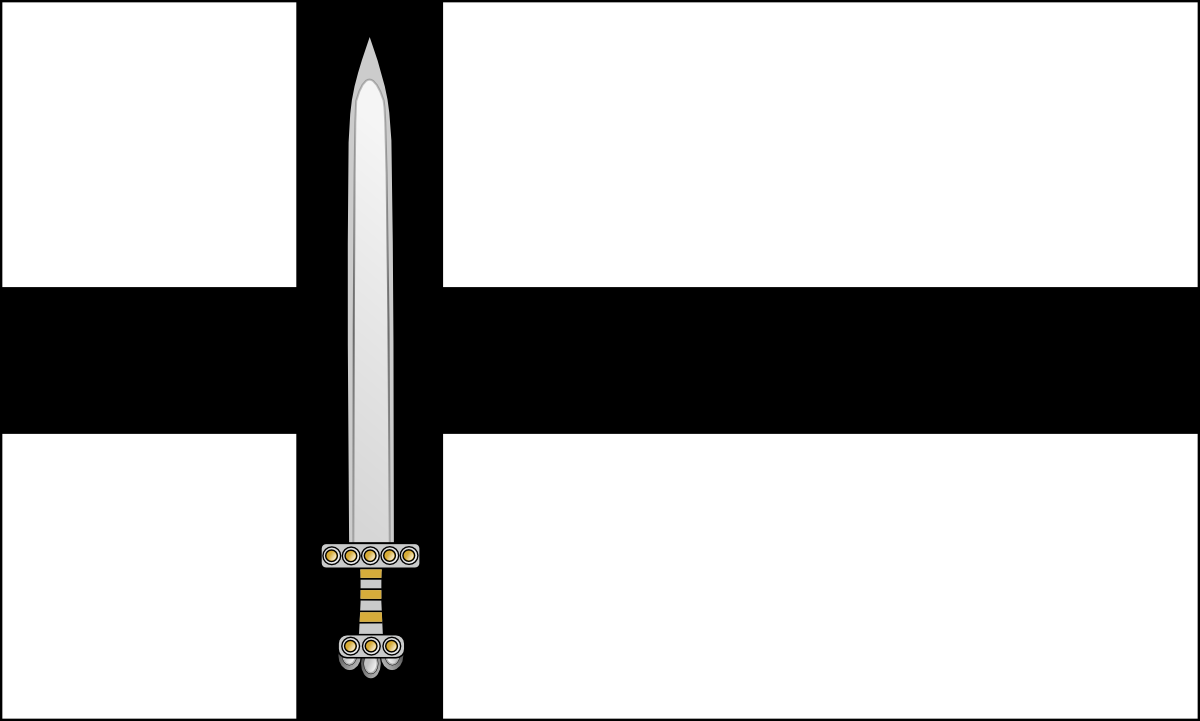
Proposal |
General Government 1939-1945
Right after the successful invasion of Poland and division of the country with the allied Soviet Union, the Third Reich annexed outright some territories and set up the rest as the temporary reservoir of forced labor, which in the span of no more then 20 years would be open to German colonization. Unlike the plans for the Russian, Ukrainian and Belorusian population, which were considered more playable, the Poles were destined to be completely exterminated. The Germans, knowing well their independent spirit, didn't want to have any troubles with them and envisioned the world without them, right after the elimination of the Jews and Roms.
Dr. Ottfried Neubacker (acclaimed as the "father" of vexillology) submitted, in the late 1939, a set of proposals for the symbols of the General Government. These proposals were not solicited by anybody, but the Governor-General, Dr. Hans Frank loved them, and wanted to adopt them for his "realm." Hitler and Himmler told him to forget it.
Dr. Neubacker told Alfred Znamierowski (another "titan" of vexillology) that he considered this proposal being one of the best he had ever done. Indeed, it is a striking design, both in simplicity and symbolism. |
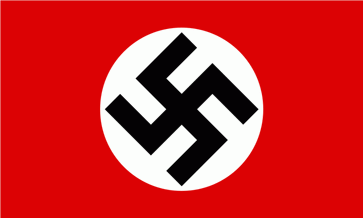
The only flag of the Gau was
the one of the Third Reich. |
Reichsgau Wartheland 1939-1945
After conquering Poland, the Nazis created the temporary General Government in the middle Poland, but annexed the large portions of the Western and Northern Poland inti the Third Reich. Warthegau was set up on, mostly, the territory of the former Prussian province of Posen (Poznan). From 1939 to 1940 it was called Reichsgau Posen, the name was changed to Warheland, derived from the main river - Warthe (Warta).
Before the war, the German population of the region constituted 16% of the total, but soon after takeover 3/4 of the million of the Poles and Jews were expelled to the General Government and the massive immigration of the volksdeuche from the Baltic countries and the Balkans was encourage in the campaign of the intensive Germanization of the territory.
The only gauleiter of the Warhegau was Arthur Greiser, SS Obergruppenführer, responsible for organizing the Holocaust in Poland, among other war crimes. He was sentenced to death after the war and hanged.
|

The only flag used was
the one of the Third Reich. |
Reichsgau Danzig-Westpreußen (Danxzig-West Prussia) 1939-1945
It was created out of the former Free City of Danzig and the annexed territory of the so-called "Polish Corridor" (Greater Pomeranian Voivodship). Some parts of East Prussia were also attached to it. In contrast to the Gau administrative system of the Third Reich, the name "Reichsgau" indicated the annexed territory. The other Reichsgaue were Reichsgdau Warheland and Reischsgau Sudetenland.
The Gauleiter, Albert Forster, was tried after the war and executed. The Germans of the territory either fled or were expelled after it was taken by the Red and Polish armies in 1945.
|
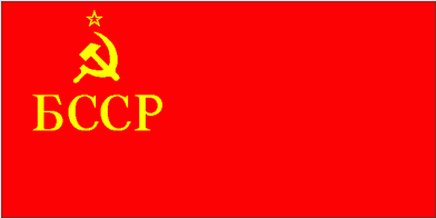
Byelorussian SSR
|
Byelorussian Soviet Socialist Republic 1937-1951
After treacherous invasion of Poland in September 1939, the Soviets conducted a phony referendum on the freshly conquered territories of Eastern Poland. According to the official Soviet tally, the people living in the area agreed to the incorporation of their lands into the Byelorussian SSR.
Churchill and Roosevelt, without consulting the Polish Government, agreed, in Tehran and Yalta, to leave those areas in the Soviet Union after the war is over.
|
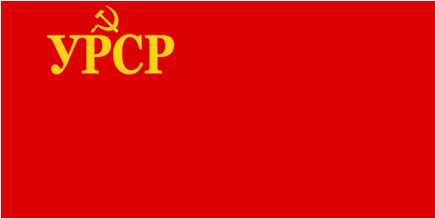
Ukrainian SSR
|
Ukrainian Soviet Socialist Republic 1937-1949
Once again, after treacherous invasion of Poland in September 1939, the Soviets conducted a phony referendum on the freshly conquered territories of Eastern Poland. According to this "referendum" everybody agreed to the incorporation of their lands into the Ukrainian SSR, this according to the their official tallies.
Churchill and Roosevelt, once again without consulting the Polish Government, agreed in Tehran and Yalta, to leave those areas in the Soviet Union after the war is over. |
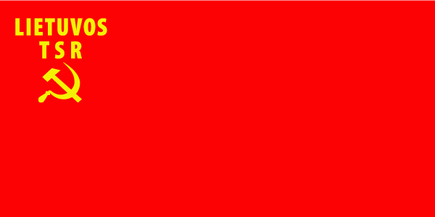
Lithuanian SSR Flag 1940

Republic of Lithuania 1990 |
Lithuanian Soviet Socialist Republic 1944-1953
In September 1939, the Soviet Union, while invading Poland, once again gave Wilno (Vilnius) to Lithuania, a move which was cynically meaningless, as the Soviets soon annexed it, together with the whole country, as the Lithuanian Soviet Socialist Republic of the USSR.
In 1990, Lithuania became the first Soviet republic to declare its independence. The restored Republic of Lithuania today is a democratic republic, a member of both the European Union and NATO.
After both Poland and Lithuania regained their independence from the Soviet domination and occupation, there has been some tension on the part of the Lithuanians, who fear that Poland would demand the return of the city of Wilno, but Poland thus far has reassured them that they were not making any claims to the Lithuanian territory, despite some protests from some Polish-Lithuanians to establish an autonomous region within Lithuania or to declare themselves an independent republic. |

Polish Government-in-Exile
|
Flag of the Polish Government-in-Exile 1939-56
The Government-in-Exile of the Republic of Poland was the official government of Poland after the country had been occupied by Germany and the Soviet Union at the start of World War II (September 1939). Thereafter, for the remainder of the war, it commanded Polish armed forces operating outside Poland.
Although largely unrecognized and without effective power after the end of World War II, it remained in existence until the end of Communist rule in Poland in 1990, when it formally passed on its responsibilities to the new Polish government. |
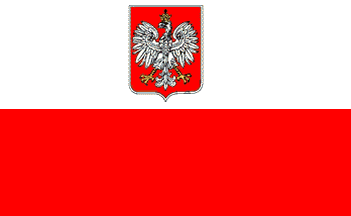
Polish Government-in-Exile |
London Government-in-Exile flag 1956-90
While Dr. Hans Frank was ruling the General Government from the Royal Castle atop the Wawel Hill in Cracow (Kraków - Krakau), there was another government ruling in the hearts of the people as the continuation of the pre-war Second Republic. This government was the delegation of the Polish Government-in-Exile located in London, and recognized by the Allied Powers as the only legal government of Poland.
In 1956, the flag of the government-in-exile was changed with the addition of a cross on the top of the eagle´s crown, added to stress the Christian character of the Polish Nation in contrast to the Godless Communists usurping power inside Poland. The decision to add the cross was also made to recognize the upcoming celebrations of the Millennium (1966) of both the Christianity and the Statehood of Poland. |
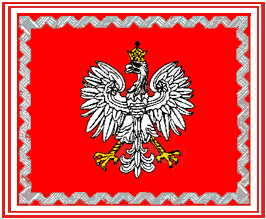
President´s Standard |
President-in-Exile in London Standard 1956-90
This was the official standard of the Polish President-in-Exile in London after 1956. Notice the cross placed on top of the eagle´s crown.
This standard was used as a car flag for the President when he was acting as the official representative of the Government-in-Exile. |
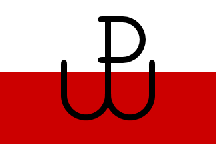
Polish Underground Flag
|
Polish Underground Flag 1939-1945
The Polish Government-in-Exile (first in Paris, later in London) maintained a formidable administrative apparatus within the country through its Delagature, including the courts of justice, which meted appropriate punishments on the collaborators, mostly death sentences, which were then carried out by the resistance forces.
This symbol, the combined letters "P" and "W" for "Polska Walczaca" (Fighting Poland), also representing an anchor, symbol of hope, were a common sight all over the country as the graffiti on the walls, defacements of German posters and on the arm bands of partisan units such as the Armia Krajowa (Home Army, or AK). It was created in 1942 by members of the AK Wawer (Small Sabotage) unit as an easily usable emblem for the Polish struggle to regain independence.
|

Flag of Japan
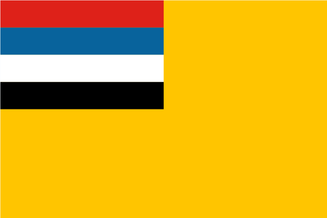
Flag of Manchukuo |
The Manchukuo Legation in Berlin 1939-1941
In the first two years of World War II, Polish intelligence officers operated right in the middle of Berlin protected by the flag of Manchukuo. It happened thanks to the curious co-operation between Polish and Japanese intelligence services. Even before the war, the chief of the Japanese Intelligence for Europe, General Onodera Makato, stationed in Stockholm, cultivated very good relations with the Polish agents in the Baltic countries. When the war began, Onodera persuaded his superiors in Tokyo to enter into close co-operation with the Polish Intelligence Services, which could provide a highly valuable information on the Soviets in exchange for the Japanese protection while operating in Germany.
Onodera arranged to issue the Manchukuo diplomatic passports to several Polish agents, including the chief Polish operative in Sweden, Michal Rybikowski (Code name "Ivanov") and employed them at the Manchukuo Legation in Berlin for cover. Answering the alarmed Nazis, the Japanese Embassy in Berlin explained that Manchukuo had a large number of citizens of Polish origin, highly educated and speaking the German language, so it was only natural to recruit them for the diplomatic service. Although the Polish agents were under constant surveillance, they did manage to gather priceless information, which they transmitted to London. One of the Japanese diplomats, the famous Chiune Sugihara, saved 6,000 Polish and Lithuanian Jews, and helped to maintain contacts with the Polish agents and to protect them while in Berlin. |
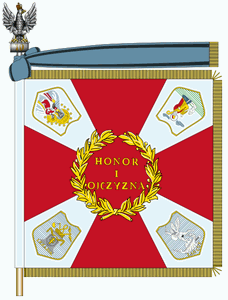
10th Mounted Riflemen
|
Armed Forces in the West
The fourth largest force among the Allied Powers, the Polish Armies, Navy, Air Force and Special Forces fought at Narvik, in France, at Tobruk, then conquered the mighty fortress at Monte Casino, and took Ancona and Bologna. In Normandy, they took Falaise and Caen, and then Breda, and the occupation of Germany.
Together with the Polish Forces in the East, which fought its way from Lenino to Berlin and Prague, Polish Armed Forces numbered 1 000 000 in the World War II, and that's not counting the underground partisan armies during the Nazi occupation of the country, which numbered another 600 000 soldiers. |
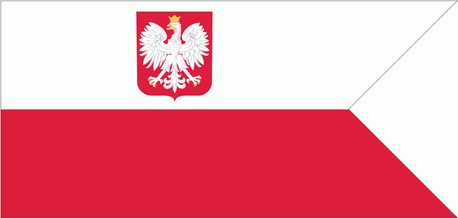
Polish Naval Ensign |
Navy Ensign 1927-45, 1989
Under this ensign, the Polish Navy, which comprised a total of 27 ships (2 cruisers, 9 destroyers, 5 submarines and 11 torpedo boats, sailed a total of 1.2 million nautical miles, escorted 787 convoys,
conducted 1,162 patrols and combat operations, sank 12 enemy ships (including 5 submarines) and 41 merchant vessels,
damaged 24 more (including 8 submarines)) and shot down 20 aircraft. Four Hundred and fifty seamen out of the over 4,000 who served with the Navy lost their lives in action in World War II.
Just on the eve of war, three destroyers — representing most of the major Polish Navy ships, had been sent for safety to the British Isles (Operation Peking). There they fought alongside the Royal Navy. At various stages of the war, the Polish Navy comprised two cruisers and a large number of smaller ships. The Polish navy was given a number of British ships and submarines which would otherwise have been unused due to the lack of trained British crews. The Polish Navy fought with great distinction alongside the other Allied navies in many important and
successful operations, including those conducted against the German battleship Bismarck.
Additionally, the Polish Merchant Marine ships (including two large ocean liners - Batory and Sobieski - were drafted into the naval service and hauled troops and materiel across the Atlantic Ocean from America to the British Isles. |
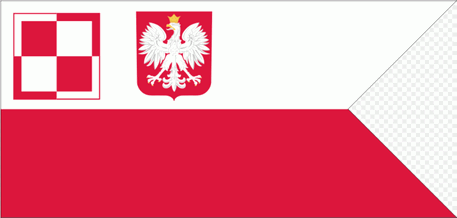
Polish Air Force
|
Polish Air Force in Britain 1940-47
The Polish Air Forces (Polskie Sily Powietrzne) was a name of Polish Air Forces formed in France and the United Kingdom during World War II. The core of the Polish air units fighting alongside the allies were experienced veterans of Invasion of Poland of 1939 and they contributed to Allied victory in the Battle of Britain and most World War II air operations.
The Polish 303 Fighter Squadron claimed the highest number of kills of any Allied squadron. (The 303 Squadron, named after the Polish-American hero, General Tadeusz Kosciuszko, claimed the highest number of kills (126) of all fighter squadrons engaged in the Battle of Britain, even though it only joined the combat on August 30, 1940. These 5% of Polish pilots were responsible for 12% of total victories in the Battle). Four Polish squadrons eventually took part in the Battle of Britain (300 and 301 Bomber Squadrons; 302 and 303 Fighter Squadrons), with 89 Polish pilots. Together with more than 50 Poles fighting in British squadrons, a total of 145 Polish pilots defended British skies. Polish pilots were among the most experienced in the battle, most of them having already fought in the 1939 September Campaign in Poland and the 1940 Battle of France.
The Polish Air Force also fought in 1943 in Tunisia (Polish Fighting Team, the so called "Skalski's Circus") and in raids on Germany (1940-45). In the second half of 1941 and early 1942, Polish bomber squadrons were the sixth part of forces available to RAF Bomber Command (later they suffered heavy losses, with little replenishment possibilities). Polish aircrew losses serving with Bomber Command 1940-45 were 929 killed.
Ultimately 8 Polish fighter squadrons were formed within the RAF and had claimed 629 Axis aircraft destroyed by May 1945. By war's end, there were 14,000 Polish airmen in 15 RAF squadrons and in the United States Army Air Forces (USAAF). |
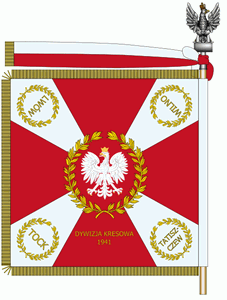
5th Eastern Division Reverse
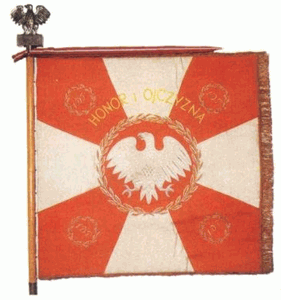
1st Polish Army 1943
(communist-led)
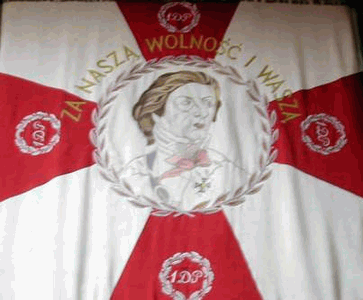
Kosciuszko Division 1943
|
Armed Forces in the East
The first Polish Army in the USSR was organized in Uzbekistan and Kazakhstan out of the Polish POW's in Soviet custody and the deportees from the Polish territories annexed in 1939. It was supposed to join the Soviet Red Army in the fighting on the Eastern Front, but it was withdrawn to Iran and the Middle East under the pretext the Soviets were unable to feed them, but really, because the British needed them desperately to guard the Kirkuk oil fields. While that Army was in Palestine, most of the Jewish soldiers were allowed to desert there. Almost all of them joined the Haganah afterwards. Corporal Menahem Begin (Mieczyslaw Biegun) waited to be released from the military oath and, when granted that by General Anders, left the Polish Army to lead Irgun Zvai Leumi, a military organization, quintessential in the Israel's war of independence, and blamed later for the several terrorist actions such as the massacre at Dar Yasin and assassination of Count Bernadotte.
Soon after that, the Germans discovered a mass graves of Polish officers who had been murdered at Katyn. That heinous crime was investigated by the Swedish Red Cross, which confirmed it was done by the Soviet NKVD. This led to the breaking of the diplomatic relations between Polish Government in London and the Soviet Union.
Shortly after that, a group of Polish communists in Moscow reached an agreement with Stalin about the creation of yet another Polish Army. That Army, although under the communist command, fought bravely for Poland and distinguished itself in the many campaigns in the USSR, Poland and Germany. Ii was formed into several infantry, tank and artillery units and operated a few air squadrons as well.
When the Soviets halted their offensive at Warsaw outskirts to allow the Nazis to put down the Warsaw Uprising of 1944, the Polish forces attempted to cross the Vistula river during the Warsaw Uprising, against the Soviet orders and without the Soviet artillery cover. That attempt ended with terrible loses, as the Germans controlled all the high ground on the other side of the river.
In January of 1945, the Polish Army, as part of the Russian forces liberated Warsaw, then took part in the assault on Danzig, Bad Kolberg, Breslau, participated in the liberation of Prague, and took part in the final Battle for Berlin.
The first standard shown is that of the 5th Eastern Division of the first Polish Army created in the USSR, the so-called "Anders Army", which was loyal to the Polish government in London. That Army was withdrawn from the Soviet Union to Iran and the Middle East, later distinguishing itself in the Battle of Monte Cassino. Notice the eagle still had the crown.
The other two standards are of the other Polish Army created in 1943 in the USSR, the one which was communist-led, including the famed Kosciuszko Division that entered Berlin with the main Soviet armies and placed the Polish flags on both the Brandenburg Gate and the Reichstag building. Notice the eagle has lost its crown. |

Goralenvolk
|
Goralenvolk (proposed Nazi Puppet State) 1939 - 1943
The Górale were mountain people of Tatra region (Podhale) located in southern Poland on the Slovak border. Some German historians, led by von Ribbentrop, claimed that the Górale had Aryan Links and nominated them to be potential members of the "Great Germanic Race," although others suspected it was because of the good beer the region was famous for. After the Germans completed occupation of Tatra region in October 1939, a small group of Górale leaders concocted the crazy idea of the formation of the mini-state for Highlanders under the protection of Grossdeutschland. Talks got under way between the group of "want-to-be" Germans and the occupation leadership. Both groups were delighted to discover the similarities of Nazi and Goralen swastikas used as grave markings used in long-forgotten times.
They designed a new flag featuring the ancient symbol (never officially adopted) for the "Goralenvolk" and authorized the establishment of a Highlanders Union. In 1940 they conducted a census to find out much Góralen support they had. They then ignored the fact that only 18% of the Highlanders accepted the concept and proceeded to activate a Highlander Committee in 1942 as a nucleus of the government for the Goralenvolk, under the leadership of Waclaw Krzeptowskia, who was given the title of Goralenfuehrer (chief). Krzeptowski's efforts to enlist local support failed miserably. By the end of 1943, the Goralenvolk project was abandoned and most of the leadership accepted a German offer to evacuate to the Reich for their safety. Krzeptowski refused and took refuge in the mountains. Soon after, a special unit of the Home Army (AK), composed mostly of his relatives, tracked him to his hideout and hung him from a tree, thus ending his incomplete career as a Goralenfuehrer, and a chief without followers. The Highlanders, very often isolated and of very independent spirit, never developed any official flags or emblems, and always proudly displayed Polish colors. |
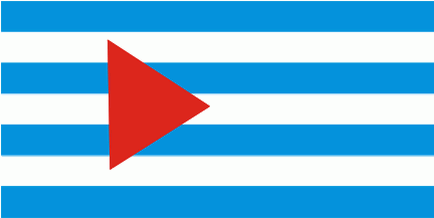
Auschwitz
|
Auschwitz - concentration camps 1939-1945
Of all the Nazi Death Concentration Death Camps, one place stands out among the others, due to the sheer numbers and the scope of operation. It was the concentration camp at Auschwitz, built near the town of Oswiecim in Poland. Originally it was a camp for the Polish political prisoners set up in 1940, but in 1942 it became a gigantic killing place for the European Jews. Methodically transported from all over the occupied Europe, the Jews, after undergoing the selection process to save, for a while, those deemed fit to work, were gassed, and then burned in the ovens.
Polish intelligence and others tried to alert the Allies of the magnitude of killings and Jan Karski delivered the urgent pleas of the Jews to Churchill and Roosevelt to bomb the camp and the railroad junctions, but the Allies choose to do nothing and the killing continued. According to the most reliable sources the total number of inmates in Auschwitz to fall victim to Hitler´s "final solution" was approximately 1 million Jews, 75,000 Poles, 21,000 Roms (Gypsies), 15,000 Soviet POW's and 10,000 others of undetermined nationality.
This flag , representing the political prisoners, is hoisted above the "death wall" at Auschwitz, as observed by Dov Gutterman of FOTW on his visit there.
|
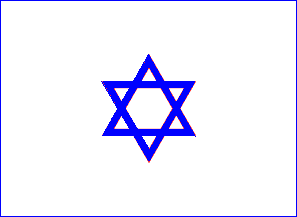
Flag of the Judenrat of the Warsaw Ghetto

Red flag of the Jewish Fighting Organization - ZOB

One of the Bicolored flags of the Jewish Military Union - ZZW
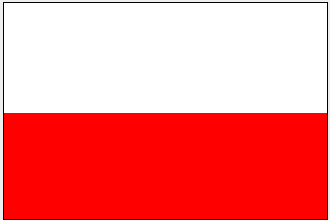
One of the Bicolored flags of the Jewish Military Union - ZZW
|
The Warsaw Ghetto Uprising of 1943
One of the most infamous events of the Holocaust was the desperate Warsaw Ghetto
Uprising of 1943. Soon after occupying Warsaw, the Nazis herded the Jews into walled section of the city. Almost half a million people were imprisoned and isolated in the small part of Warsaw, in inhumane conditions, starved, exploited and destined for extermination. The Germans' love of order prompted them to set up the imitation Jewish government in the Ghetto, the Judentat (Jewish Council), which was to assist the Nazis in exploiting the slave labor and helping to maintain the order.
Gradually, the inmates of the Ghetto were transported out to concentration and extermination camps such as Auschwitz, Treblinka, Sobibor, and Belzec. In the spring of 1943 the decision was made to liquidate the Warsaw Ghetto and sending the remaining Jews to the death camps. The chairman of the Judenrat in the Warsaw Ghetto Dr. Adam Czerniakow realized that the existing policy of collaboration is not going to save any lives and committed suicide.
With only the remnants of the people still there, two Jewish organizations decided to resist, knowing well they have no chance to succeed, but determined to rather die fighting than be just led for slaughter. One of these groups was the Jewish Fighting Organization (Zydowska Organizacja Bojowa) composed of the leftist and ultra-leftist members and supported by the Polish communist guerrilla group GL (People's Guard) in terms of armament. They didn't have a single person with the military experience, nevertheless they fought heroically to the death. Only a handful of them survived by leaving the Ghetto through the sewers and being taken by GL to the forest. This group used the red flag, which they placed on the wall of their main bunker while singing the "Internationale."
Another group, larger and led by the experienced officers of the Polish Army, the Jewish Military Union (Zydowski Zwiazek Wojskowy) inflicted much more casualties on the German, Ukrainian and Latvian forces directed to quell the Uprising. Jewish Military Union was an integral part of the Home Army (AK) and was armed and supported by the special unit of Home Army's Military Police, which even entered the Ghetto by the way of the underground passages and relieved the exhausted Jewish fighters in battling the SS. That group hoisted two flags from the roof of the tall building housing their headquarters.
These flags were very well visible from the "Aryan" part of the city. One was the white and red Polish flag and the other was the white and blue Jewish flag. These flags so enraged Himmler that he screamed wildly, on the telephone, an order to the commandant of SS in Warsaw Ghetto: "Stroop, you have to take down these flags at any price, I mean it - at any price !" None of the leadership of the Jewish Military Union came out alive from the Ghetto.
Militarily, the Uprising cost the Germans, officially, 19 fatal casualties (according to the report of SS-General Stroop). The Jewish fighters claimed 1,000, but the most fair assessment is about 300, of which about 30 can be attributed to the Jewish Fighting Organization and the rest to the Jewish Military Union. But the numbers don't matter. What really matters is the heroism of the people who refused to die on their knees. They, ultimately, achieved the final victory of the human spirit.
|
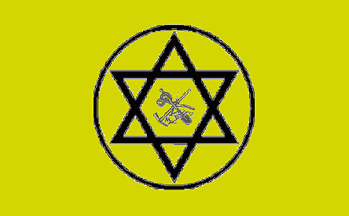
Flag of Rumkowski´s "Empire"
|
Flag of the Litzmannstadt (Lodz) Ghetto 1942-1943
In every Polish city and town there was the Ghetto to imprison the Jews. One of the larger ones was in the city of Lodz, which the Germans "re-christened" Litzmannstadt. It was in Central Poland, important center of the textile industry, populated by the significant Jewish and German minorities before the war.
In this Ghetto, the Nazis allowed certain degree of real authority to the chairman of the Judenrat, one Mordechaj Chaim Rumkowski. He lived the life of luxury in the starving and dilapidated ghetto, loved to be addressed as the King or Emperor, had the postage stamps printed with his likeness and minted own coins out of aluminum and magnesium for the circulation in the Ghetto. Corrupt and mean man, served the Nazis well persecuting his own brothers and sisters.
He, himself, designed an emblem for his "Empire" featuring the scissors, needle and thread, pick and shovel, all within the "Star of David," which was flown, as the yellow flag, over his opulent residence and over the headquarters of the Judenrat. His servility to the Nazis didn't help him at the end, as he and his entire family were send to Auschwitz to die, at the time of the Ghetto's liquidation in 1943. |
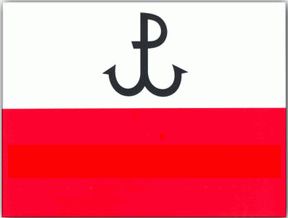
Home Army Flag

Home Army Armband
|
Warsaw Uprising Home Army Flag of 1944
These were the flag and armbands used by the Home Army (AK) soldiers during
the Warsaw Uprising of August-October 1944. At this time, on the Eastern Front, the German armies were in full retreat from the Red Army which was fast approaching Warsaw's eastern suburbs. The liberation of Poland's capital seems assured. The commander of the Polish Underground Home Army (Armia Krajowa, AK) ordered an armed uprising in Warsaw against the occupying Germans to force them to abandon the city. The insurgents, however, are unaware that the Germans have decided to defend "fortress Warsaw" and to counter-attack the Red Army forces to the east of the city.
At this time the AK had approximately 40,000 soldiers, including 4,000 women, but only had enough weapons for 2,500 fighters. They faced a 15,000-strong German garrison, which unknown to them would soon grow into a force of 30,000, armed with tanks, planes, and artillery. The fighting began when the Insurgents attacked German military installations, bridges, airports, and train stations. By nightfall, the AK had constructed a network of street barricades blocking off most of the city's main arteries. By the end if the first week most of the city was liberated and back in Polish hands.
Suddenly, the Soviet eastern front offensive stopped within twelve miles of the suburbs Warsaw, and the Soviet air force abandoned the skies over Warsaw to the Luftwaffe. When the Germans realized the Red Army had suddenly stopped its offensive, Heinrich Himmler, head of SS and Gestapo, immediately dispatched relief troops to Warsaw. SS General Erich von dem Bach assumed command of all German forces to suppress the Uprising. Himmler's orders were to kill all of the city's inhabitants, not take prisoners, and level Warsaw as an example for the rest of Europe.
|
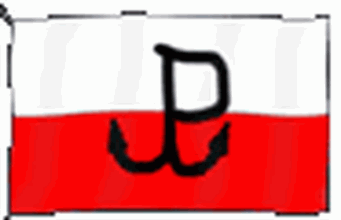
Warsaw Uprising Flag
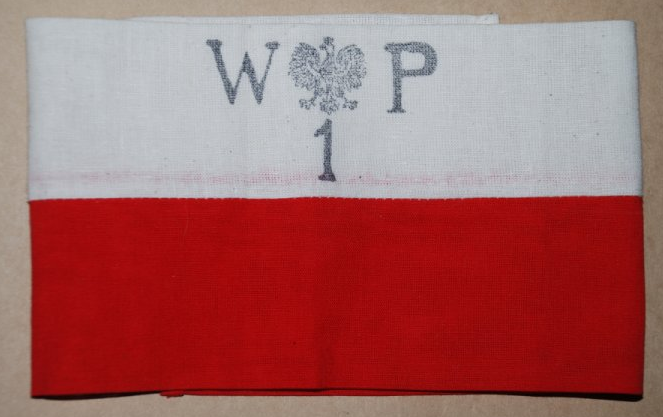
Opaska Powstancza Armband
|
Warsaw Uprising Flag and Armband of 1944
With the sky free of Soviet planes, the Germans were free to begin a relentless aerial bombardment of the city daily. The insurgents had no anti-aircraft weapons to defend the city from the attack.
After 63 days of vicious fighting, with the Soviets as spectators, 250,000 people would ultimately pay the price for the attempt to free themselves from the cruel occupation. German troops conducted mass executions of approximately 65,000 civilians in the captured districts. Poles, without regard for age or gender, are rounded up house by house and shot. More than 1,360 patients and staff of Polish hospitals are murdered. Female civilians are used as shields in front of tanks that attacked insurgents' positions, eventually, all civilians were either forced to leave the city, or sent to work camps. Approximately 55,000 civilians will end up in the concentration camps as dangerous elements, and an additional 150,000 were transported into forced labor camps in Germany.
A massive looting campaign of the city by the Germans began. They even allowed delegations from nearby German municipalities to enter the ruins and strip them of anything that had not already been taken by the Wehrmacht, SS, and Soviet and Ukrainian collaborators. Over 33,000 railway wagons filled with furniture, personal belongings and factory equipment left Warsaw for Germany.
|
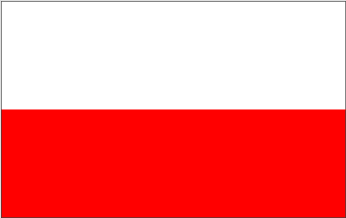
Polish Flag over Berlin |
Polish flag over Berlin - Siegessäule - May 2, 1945
On May 2, 1945, as Polish troops advanced into Berlin, a Polish platoon of the Kosciuszko Division of 1st Polish Army first reached the Reichstag and hoisted a Polish flag on its dome, only to have it mowed down by the fire of the incoming Soviet troops. Apparently, the Polish soldier who raised the flag was killed by the Soviets racing to have their flag hoisted on the building which, for unknown and unclear reasons, they decided had the most important symbolic value in Berlin.
Both, Soviet, and Western sources as well, curiously omit and ignore the Polish participation in the final Battle of Berlin. Admittedly, in the sea of 2 million strong Red Army assaulting Berlin, the Polish troops were not so visible, but they played an important role in that battle nevertheless. About 180,000 Polish soldiers had took part in the final drive on Berlin under the command of Polish General Michal
Rola-Zymierski, and 12,000 soldiers of the Kosciuszko Infantry Division, two artillery regiments and an engineering unit, found themselves in the middle of vicious battles on the streets of Berlin. Those Polish soldiers took 56 quadrants of the city, 7 factory complexes, 4 subway stations and most of the Polytechnic campus. They took 2550 POWs. But they paid a heavy price, loosing 2,800 of their own in these battles. On May 1, the Polish flag was hoisted on top of Brandenburg Gate, shortly joined by the red Soviet flag. Next day the Soviets removed the Polish flag, before advancing on the Reichstag building. |
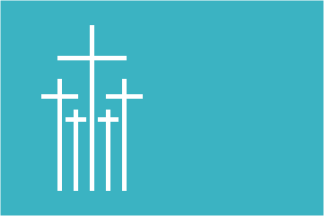
Kriegsgraeberfuersorge
|
German War Graves Commission Flag (modern)
In the Northern Communal Cemetery [Cmentarz Komunalny Pónocny] in Warsaw today there is a light blue flag with five white Latin crosses that flies over the memorial of German soldiers fallen during World War II. It is a flag of the German War Graves Commission (Volksbund Deutsche Kriegsgräberfürsorge) placed there to honor the 446,000 German soldiers who died in Poland in World War II.
Until the end of the 1980s, the Poles were unwilling to acknowledge the German graves situated in their country. However, in 1989, a bilateral agreement was reached where the graves of the German war victims were to be legally protected, respected and appropriately maintained. As a result, the graves of German soldiers at cemeteries all over Poland have been restored.
Since the late 1990s, Polish and German youth camps have worked with the Polish army in areas where German war cemeteries are situated to repair the architectural artifacts and out buildings in German cemeteries from both World Wars. The hope is these events will help the youth of both countries become acquainted with each other, to learn history and tolerance in the joint project.
|
| Top of Page | Medieval Poland 900 to 1599 | 17th and 18th Century Poland 1600 to 1795 |
| Alliance of the Three Black Eagles (Poland Partitioned) 1795 to 1807 | Napoleonic Era and Poland 1807-1824 |
| The Congress of Vienna and its Aftermath 1820-1914 | World War I and the Parliamentary Democracy 1914 to 1926 |
| Second Republic of Poland (Sanacja) 1926 to 1939 | World War II (German and Soviet occupation) 1939 to 1945 |
| People's Polish Republic (Communist regime) 1945 to 1999 | Third Republic of Poland 1999 to present |
The Flags of the People's Polish Republic (Communist regime) 1945-1999
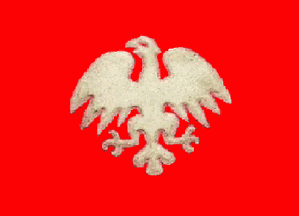
PKWN Flag |
PKWN-Lublin-July22
When the Soviet and Polish troops crossed the Curzon Line, (which Stalin established as a Polish-Soviet border in Yalta, with Roosevelt and Churchill agreeing) the Polish Committee of National Liberation (PKWN), a body created in Moscow, issued the proclamation on July 22, 1944 announcing it is joining with the hastily organized (communist) underground National Council (KRN) and it is now a new government on the liberated Polish
territory.
The Polish Armies created in the USSR were wearing a strange looking eagles on their caps and helmets. It was uncrowned eagle, modeled on the 13th Century bird adorning the tomb of one of the Piast princes.
Soldiers got a hard time to get used to their new symbol, calling it, in Russian "kurica" (the chicken). That eagle was displayed on the first banners hoisted in Lublin by the Polish Committee of National Liberation (PKWN). |
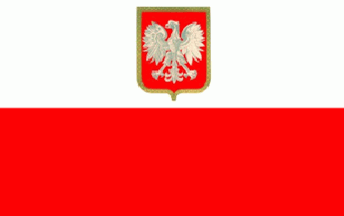
Bierut Flag
|
The Polish Republic 1944-1952(1955) flag
At the Western Allies insistence, Stalin agreed to co-opt few, willing members of the Polish Government in London, now completely abandoned by the Allies, and the Provisional Government of National Unity was formed. At first, the country's name remained "Rzeczpospolita Polska" (Republic of Poland), the national symbol was settled to be a slightly modified White Eagle of 1927, but with the crown removed.
The democratic constitution of 1921 was readopted, also modified, to suit the communists dominating the new government. Boleslaw Bierut, a communist agent and a puppet of Stalin, became the President and, ostensibly, participated even in the religious ceremonies to fool the people into believing it is a normal, sovereign country. Not so obviously, the reign of terror had began directed against any opposition to the new order. The elections, agreed on in Yalta, were conducted in 1947, but, were totally falsified.
The screws of repression and communist-inspired changes were slowly tightened up. |

Polish National Flag |
Polish Peoples Republic 1952-1989
In 1952, the Communists, feeling secure in power, surprised the nation, announcing
the new constitution of the new regime called from now on, the "Polish People's Republic." It lasted, as the satellite state of the Soviet Union, until the Solidarity movement broke the communist monopoly on power in August 1989.
The symbols of the Polish People's Republic underwent only minor, cosmetic changes, first in 1955, and again in 1980, but nothing dramatic. It is said that President Bierut offered to Stalin in 1945 to change the Polish symbols, the emblem and anthem, to something more socialistic, to what Stalin answered that he likes them as they are.
So, thanks to Stalin, the Poles were spared having to be represented by the red star, wheat stalks and the machine gear-wheels. It is also said that Stalin reassured in 1942 the then Polish Prime Minister, General Wladyslaw Sikorski, that there are no intentions on the part of the Soviets to force the communist system on Poland. He said it would be like "trying to put the saddle on the cow." |
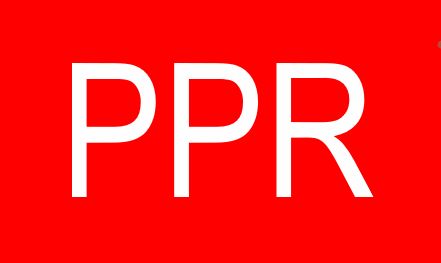
Polish Workers Party
1942-1948
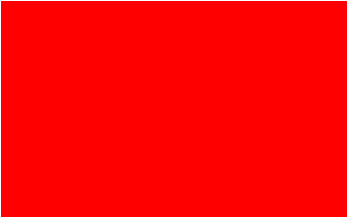
Polish United Workers' Party
1948-1989
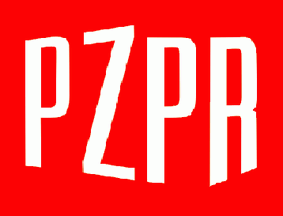
PZPR Flag (Variant)

United People's Party 1949
(also United Peasants' Party)
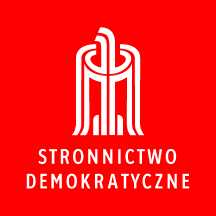
Democratic Party 1949
|
Polish Political Parties 1948-1989
The Polish Socialist Party (Polska Partia Socjalistyczna - PPS), originally a left-wing political party formed in 1892 in Paris by exiled Polish patriots during the Great Emigration, reestablished itself in Poland and lasted until the Communist takeover in 1948. After liquidating all non-socialist opposition, the Communist forces broke the PPS into pieces and forced it to unite with the Polish Workers Party (Polska Partia Robotnicza - PPR), which existed between 1942 and 1948, and eventually making them both part of the Polish United Workers' Party (Polska Zjednoczona Partia Robotnicza - PZPR), the new Communist ruling party in Poland in 1948.
|
|
|
Polish Socialist Party Flag
(Type #1) |
|
Polish Socialist Party Flag
(Type #2) |
When the 1952 Constitution transformed Poland into the "People's Democracy" and acknowledged the leading role the USSR had played in establishing the only "'just' world-wide socialist system," this seemed confirmation of Poland's puppet status and assured the complete domination of the Communist party of the political life of the nation.
In a further attempt to pull the wool over the eyes of the outside world, and to maintain some illusion of "democracy" in Poland, two additional parties were represented in the Polish Sejm (Parliament). These were the United People's Party (Zjednoczone Stronnictwo Ludowe or ZSL), an agrarian party also called the United Peasants' Party, and the Democratic Party (Stronnictwo Demokratyczne - SD), originally a liberal party which mainly gathered urban professionals. However, both of them acted and voted according to the instructions given to them by PZPR. Eventually, other groups (allied with PZPR) were allowed to have candidates elected. This included the infamous Piasecki's PAX Society (Stowarzyszenie PAX) created in 1947, and the Christian-Social Movement (Chrześcijańskie Stowarzyszenie Społeczne or ChSS) created in 1956, both intended to break down the power of the Catholic Church.
During this period, some real opposition was allowed to marginally exist, between 1956 and 1976, when independent representatives of the Catholic intelligentsia who had gathered informally in the group called "Znak" (The Sign), where allowed to run for office. However, the state-controlled the mass media didn't allow their voices to make it to the general public and their number of representatives in the Sejm never exceeded five.
The flag of the Polish United Workers Party (PZPR) was plain red, although sometimes charged with the party name initials shaped so as to resemble the map of Poland. Of the other two puppet parties, the United People's Party (ZSL) used a plain green flag and the Democratic Party (SD) used a red flag charged with a stylized, hyper-simplified eagle above the party name which was inscribed in two rows, all in white. |
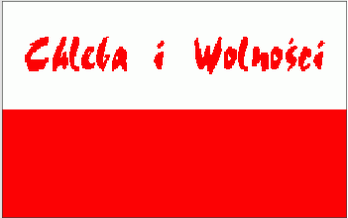
Bread and freedom
|
Poznan Workers Rebellion (Bread & Freedom)
In 1956, the workers in Poznan rebelled, went on strike and demonstrated under the slogan "Bread and Freedom." It happened during the Poznan International Fair in the presence of many foreign journalists, so the communists couldn't hide from the outside world. Nevertheless,the Prime Minister (Cyrankiewicz) promised to "cut the hand raised against the people's power" the tanks were called to quell the rebellion, but it also became obvious the changes were absolutely necessary.
Gomulka and like-minded , so-called "nationalistic" communists, were brought out of imprisonment, Marshal Rokossovsky (a virtual Soviet viceroy) and scores of the Soviet officers in the Polish Army were send back to the USSR, Soviet garrisons in Poland substantially reduced, hard-line Stalinists removed from the party's leadership, and the Poles were able to experience, finally, some taste of freedom, denied to them for a long time At that time, Poland became a sort like the communist "Disneyland," the tourists from others Soviet-block countries were flocking to it to gleams how it is "in the West," lively art, "decadent" music (jazz & rock'n'roll), satirical (and highly political) cabarets, striptease, relative freedom of expression - it became to be known as "the happiest barrack in the camp," (socialist camp, that is). It lasted only for a year and ended up with Gomulka's reverting to the old ways of communist ideology. |

State Flag of Poland 1956
(without crown)
|
Polish People's Republic State Flag (Communist regime) 1952-1989
This flag model was actually instituted in 1955, but the Communist regime rule began in 1952. Since World War 1, Poland has had three main flag types: the national flag (a plain white-red bicolor - the shade changed in 1928 and 1980), the civil ensign (with shield and eagle), the war flag (swallow-tailed).
Before and early in World War II, the eagles were crowned (a redesign of the crown occurred in 1928). When the Russians installed the communist regime, the crowns were removed from all the eagles (arms, flags, military badges, etc.). The exile government in London continued using the crowns until 1990. After the collapse of communism, the crowns were restored, but not all at once: the arms in 1989, the civil ensign in 1990, and the war flag in 1993. |
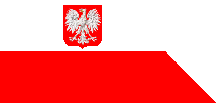
Poland War Flag 1956
(without crown)
|
Polish People's Republic War Flag (Communist regime) 1952(1955)-1989
A war flag (or military flag) is a variant of a national flag for use by the nation's military forces on land. (The nautical equivalent is a naval ensign.) Under this strict sense of the term, few nations currently have war flags, most preferring to use instead their state flag or standard national flag for this purpose. |
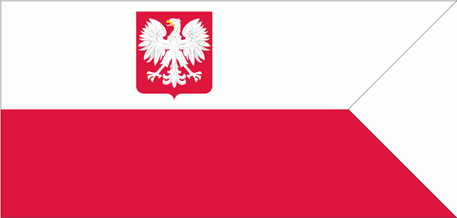
Polish Naval Ensign
(without crown)
|
Polish People's Republic Navy Flag (Communist regime) 1945-1989
After World War II, the new Soviet-imposed Communist government revived the Polish Navy with headquarters in Gdynia. During Communist times, Poland's Navy experienced a great buildup, including the development of a separate amphibious force of Polish Marines. The Navy also acquired a number of Soviet-made ships, including 2 destroyers, 2 missile destroyers, 13 submarines and 17 missile boats. Among them was a Kilo class submarine Orzel and a missile destroyer modified Kashin class (ORP Warszawa). Polish shipyards produced mostly landing craft, mine sweepers and auxiliary vessels.
The primary role of the Warsaw Pact Polish Navy was to be Baltic Sea control, as well as amphibious operations along the entire Baltic coastline against NATO forces in Denmark and Germany. The collapse of the Soviet Union, the dissolution of the Warsaw Pact, and the fall of Communism ended this stance. |
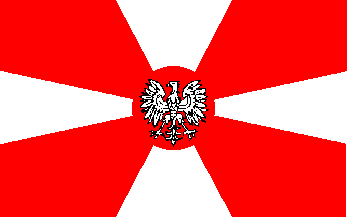
Polish People's Army
|
Polish Army Standard (Communist regime) 1945
Although the Wojsko Polskie (Polish Army) Standard, as shown here, was placed on a Polish postal stamp for the 35th anniversary of the "Ludowego Wojska Polskiego" (Polish People's Army), which was the Communist regime's armed forces, it was actually used by the regular Wojsko Polskie and they were not military units of communist regime, but normal military units. A lot of people imprisoned by Soviets had wanted to fight against Nazi, but they were released too late to join General Anders' army, so they join the WP units to fight on the Eastern Front. It wasn't until 1952 that the whole Polish Army was renamed the "Polish People's Army" and this pattern then became the standard used by the individual army units with inscriptions in the corners.
The pattern of this standard was in general use by all Polish military units, but usually the names and numbers of particular units (divisions, regiments, etc.) were written on the red in each corner. The generic model of this flag (without inscriptions) did exist and was used on ceremonial occasions to represent the entire Armed Forces. It was probably used during the Second Republic too, but with the crown on the eagle.
A 1981 photo of General Jaruzelski, announcing (on TV) martial law and the military takeover of Poland, has this standard, but with the eagle surrounded by a green wreath of the laurel leaves, behind him. This version was the standard of the Commander-in-Chief of the Armed Forces. He was acting in that capacity on that infamous day. |
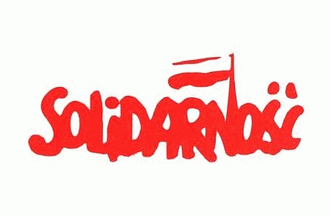
Solidarity Union Flag
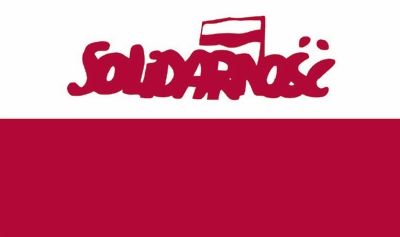
Defaced National Flag
supporting Solidarity
|
Independent Self-governing Trade Union "Solidarity" Flag 1980-1990
It was under a trade Union Flag that a massive anti-communist social movement was born to fight for Poland's freedom which resulted in the fall of Communism and the birth of the Third Polish Republic in 1990. The movement was "Solidarity" and it all happened under a white flag, with the word "Solidarity" written in red across it. A variant seen occasionally was a national flag with Solidarity written in red across it's white stripe.
In August of 1989, Poland's last communist leader, General Wojciech Jaruzelski reached an agreement with the Solidarity and the Church, and, in the first instance in the communist world, the power was transferred to the anti-communist opposition, and a new government led by Tadeusz Mazowiecki (a Catholic activist) was formed. One of the new governments first proclamations put the crown back on the White Eagle's head, and dispensed with the hated name "Polish People's Republic."
Solidarity won 99% seats in the first completely free elections for the restored Senate. On December 22, 1990, the newly and freely elected President of Poland, Lech Walesa, accepted the presidential insignias from the hands of the last Polish President-in-Exile, Ryszard Kaczorowski.
( Click here to learn more about these amazing events in Poland )
|
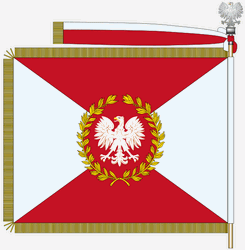
Jaruzelski Division Standard
|
The Military Council of National Salvation 1981
Wojskowa Rada Ocalenia Narodowego (WRON)
On December 13, 1981, General Wojciech Jaruzelski declared martial law and the military takeover of the government of Poland. His "Military Council of National Salvation" consisted of 15 generals, one admiral and 5 colonels. One of the colonels, Miroslaw Hermaszewski, who was the only Polish cosmonaut who went to the outer space, was included on it without his knowledge and consent. Since WRON, in Polish, is close to "wrona" meaning a crow, it soon became a subject of popular jokes, like "orla wrona nie pokona" (The crow can't defeat the eagle). Jaruzelski announced the suspension of the freedom of the speech, civil liberties and any gatherings, except the religious ones. Most of the "Solidarity" leadership were arrested, together with many
intellectuals, students and activist workers. Telephone lines went dead and the mail was heavily censored and delayed.
Tanks and thousands of troops surrounded major industrial enterprises to prevent the strikes, universities and high schools were closed down. Only one radio station and one TV channel, both controlled by the junta, were left in operation. TV announcers appeared on the screen in the military uniforms. For use of any duplicating equipment ("xeroxing") the death penalty was threaten.
It was the first and only military coup d'état in the communist block, underlining how feeble the system did get. Later, although General Jaruzelski defended this takeover as a necessary evil to save the nation from the consequence of the Soviet and Warsaw Pact intervention, evidence was uncovered that he urged the Soviets to come and help him squash the Solidarity movement. After two years of martial law, the government was returned to the Communist Party, but was forced to enter negotiations, with the Catholic Church serving as a moderator, and eventually, relinquish all powers to the anti-communists of the Solidarity movement in August 1989.
|
- My thanks to Chrystian Kretowicz for all his expert help, research, advise, and images used on this page -
| Learn about "The Evolution of the Polish Coat-of-Arms" Here |
| Top of Page | Medieval Poland 900 to 1599 | 17th and 18th Century Poland 1600 to 1795 |
| Alliance of the Three Black Eagles (Poland Partitioned) 1795 to 1807 | Napoleonic Era and Poland 1807-1824 |
| The Congress of Vienna and its Aftermath 1820-1914 | World War I and the Parliamentary Democracy 1914 to 1926 |
| Second Republic of Poland (Sanacja) 1926 to 1939 | World War II (German and Soviet occupation) 1939 to 1945 |
| People's Polish Republic (Communist regime) 1945 to 1999 | Third Republic of Poland 1999 to present |
|
